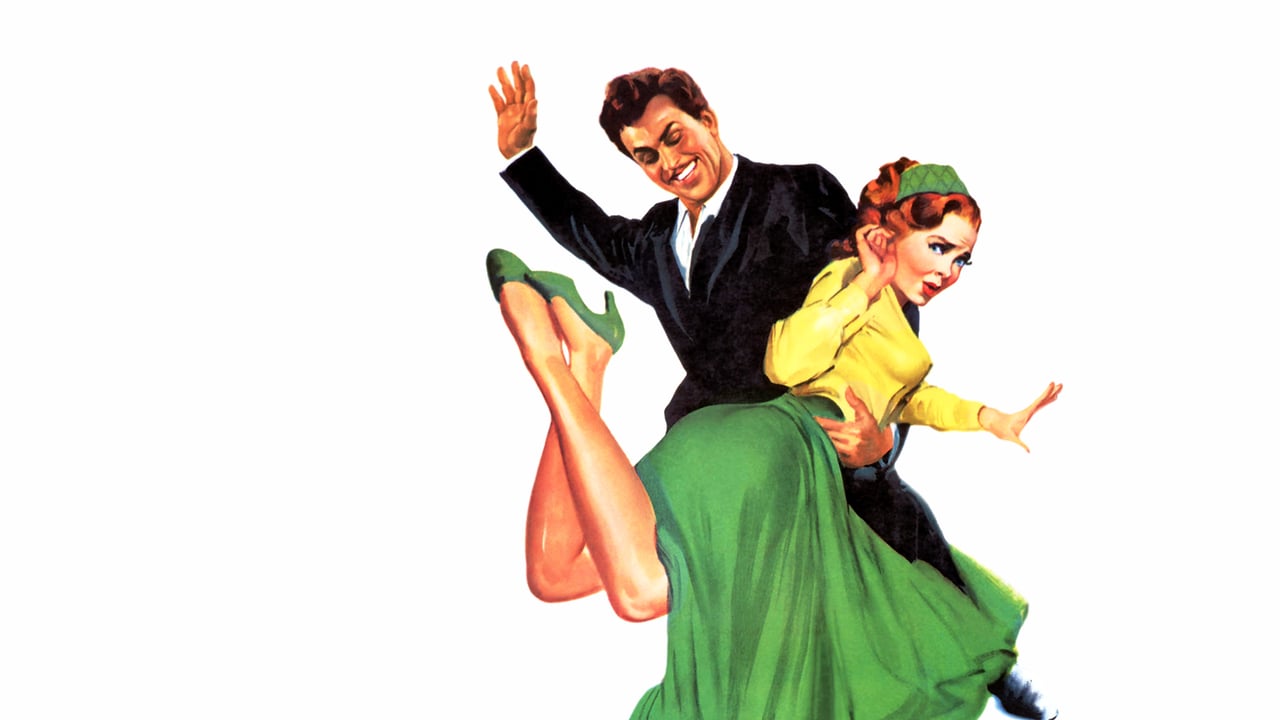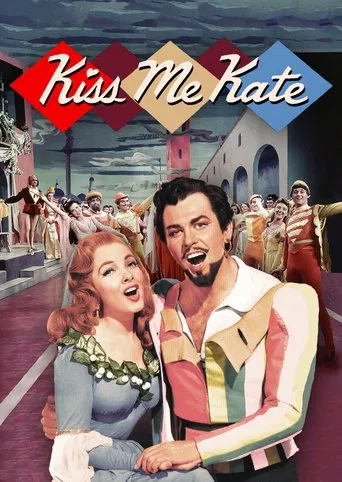

Divorced theater actors Fred (Howard Keel) and Lilli (Kathryn Grayson) team up again to play a musical version of Shakespeare's the Taming of the Shrew, igniting a full range of emotions between the two. The situation is not helped by Fred's flirtation with another actress, Lois (Ann Miller), and finally Lilli quits in mid play. In the meantime, Lois's boyfriend Bill (Tommy Rall) runs up a debt with gangsters, but signs Fred's name. Things grow more complicated when the gangsters (played by James Whitmore and Keenan Wynn) arrive to collect the money, and refuse to let Lilli leave. All the while, the play within a play is on-going as well, adding a further dimension to plot.It may sound complicated, but the beauty of Dorothy Kingsley's screenplay (which was nominated for a Writers Guild of America Award) is how well it flows, weaving all the subplots in and out, and finally tying them together. Keel and Grayson are excellently matched, with both having superb singing voices. Miller, as always, steals the spotlight with her vivacity and dancing skill--helped, of course, by Hermes Pan's excellent choreography. Costumes and sets are cheerful and colorful and look great all around. The star of the show, however, is Cole Porter: his clever lyrics and lovely music are the groundwork that the builds this fine film.What I dislike about this movie is that it highlights the Taming of the Shrew (a horrible play) in a positive, even idolizing, light. The modern part of the plot follows the Taming some, showing male dominance and female subservience as the expected outcome between a man and a woman. I realize the movie is only showing the societal norm for the 1950s, and as such can enjoy the rest of the film without being affected.The bottom line is that Kiss Me Kate is a fun, lively movie, with a few flaws, but still good enough for a universal recommendation.
... View MoreOK all you lovely people out there, I know you enjoyed this and I feel a bit guilty to disagree. Maybe I was in a bad mood ? I am not sure ! That said I really felt it was OTT badly acted, somehow overly stretched singing that just did not hold up to the Cole Porter songs and lyrics that I have always loved. The print which clearly has undergone stupendous clean up and stunning hues of glorious colors, added to all that 3D simply detracted from the atmosphere of the original 2d version ! Having to wear infernal uncomfortable spectacles, continually drooping on my face was an additional pain in the backside. And frankly, a film of this genre in 3D is nothing less than an unattractive addition where none is needed. In no way does 3D add any gravitas whatsoever to this great version of Shakespeare's tale. Come on, really, a juggler throwing his skittles or whatever they were, a complete waste of time and detracting from all the original value. Why on earth do we need to fix something that is not broken ? I should have known better, as in fact my preview invite did state 3D and if I would have thought about that, I could have realized, that as a fussy purist. Actually, my comment re 'badly acted ' really somehow is at the mercy of this in 3D ! For me, it is akin to placing all actors under a microscope, thereby exaggerating their performances to the point of overblowing the performances to something that was not seen or felt in the original ! Once again, my personal interprtation. I would not have made the long journey required to get to the preview theater. I left after about 25 minutes due, at least partly to 3D glasses. And finally, the theater was packed to capacity, so clearly I am in a minority of about one quarter of one percent ? So, anyone reading this, please be aware, you may well revel and thoroughly enjoy this film from beginning to conclusion. My advice, never accept someone else's opine, as the above is always nothing more than personal for that particular day of viewing ? On another day, or evening, not withstanding the pointless ( also my opine only ) 3D, I may view at a later date and also thoroughly enjoy ?
... View MorePerhaps you're a student in high school or college and have to read "The Taming of the Shrew" and have heard about this movie being a musical update of it. Well, don't see it, thinking you don't have to read the play. There's no excuse in getting out of Shakespeare. But, see "Kiss Me Kate" along with reading the play. This wasn't based directly from Shakespeare, but from an already adapted play. Starring Kathryn Grayson, Howard Keel, Ann Miller, Keenan Wynn and James Whitmore, this is a non-stop musical with no time to let up for breath. There are constant show-stopping numbers (all written by Cole Porter), including the beautiful duet, "So in Love," sung by Kate and Howard, Kate and Howard's duet "Wunder Bar", Ann's "Why Can't You Behave?," "Faithful in My Fashion," her unforgettable what-could-top-it "Too Darn Hot" number, Howard's little-black-book number and last but definitely not least Keenan and James' duet "Brush Up Your Shakespeare," which is simply superb. Kathryn Grayson is great as usual, but this movie really belongs to Howard Keel who has never been better. (His rich, deep voice is perfect for the operatic songs within the play, and for just everything.) And, also to Ann Miller who is definitely in top form.If you want to brush up your Shakespeare and your movie musicals, then this is for you. Need I say more! Really one of the few perfect movie musicals ever!
... View MoreEx-marrieds co-star in a musical production of Shakespeare's "The Taming of the Shrew"; backstage romantic complications ensue, with the female star threatening to walk out mid-performance. Weighted down by the inept Kathryn Grayson, this film version of the Broadway success runs out of steam after about an hour or so (of course it doesn't help that Grayson is portraying a selfish non-trouper, however she just hasn't the personality or the energy for the part, and one can see early on she's the weak link in the production). Ann Miller, Bobby Van, Bob Fosse, and especially Tommy Rall dance up a storm, and their musical numbers are all killers. Rall, playing a gambler off-stage, has a funny bit with a cigarette, and does an amazing routine with Miller on the roof of the theatre. Miller displays such a joy of performing and a love of this material that she shows Grayson up in more ways than one. Howard Keel looks great in his Petruchio costume, but his baritone voice is strictly love-it or leave-it; since most of his scenes are with Grayson, he loses most of his performing luster to the supporting team, but director George Sidney attempts to keep it all lively and merry. Originally screened in 3-D, which explains why so many objects are, amusingly, hurled at the camera. ** from ****
... View More